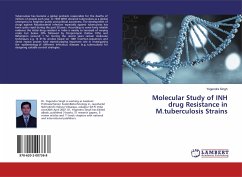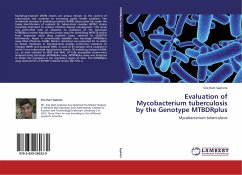
Detection of transcription silencing sites in Mycobacterium leprae TN
An Attempt to Recognize Transcriptional Inactive Sites
Versandkostenfrei!
Versandfertig in 6-10 Tagen
32,99 €
inkl. MwSt.

PAYBACK Punkte
16 °P sammeln!
Detection of transcription silencing sites in Mycobacterium TN provides us the best solutions in understanding the virulence encoded by the genome of M. leprae and immunity of the host against the pathogen. Genome analysis of various species of genus Mycobacterium has shown that there is little change in gene order among species and even in between strains of the same species. Sometimes it is same in all the strains. So, transcriptional and translational control of gene expression might be the reason for the differences between two strains of the same gene content and order. An attempt was mad...
Detection of transcription silencing sites in Mycobacterium TN provides us the best solutions in understanding the virulence encoded by the genome of M. leprae and immunity of the host against the pathogen. Genome analysis of various species of genus Mycobacterium has shown that there is little change in gene order among species and even in between strains of the same species. Sometimes it is same in all the strains. So, transcriptional and translational control of gene expression might be the reason for the differences between two strains of the same gene content and order. An attempt was made to recognize transcriptional active sites which play an important role in transcriptional silencing and thus regulating the gene expression at the level of transcription. While studying the genome of M.Leprae, it was found that there are approximately half of the genes expressed while the rest are transcriptionally inactive. Transcription silencing might be one of the reasons contributing to the differences in two organisms which may be having the same gene content and order and having different expression patterns, which also effect pathogencity of organism.












